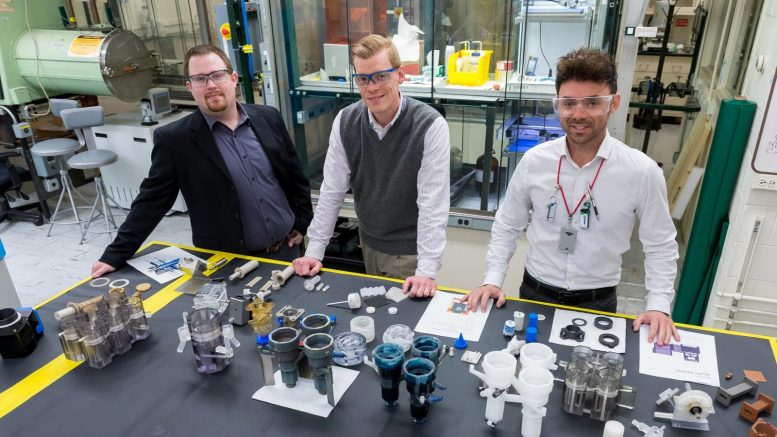One of the biggest problems that comes with installing nuclear power plants is figuring out what to do with the nuclear waste. While the science behind storing radioactive waste is solid and safe, there are still risks and costs associated with every storage solution. And public sentiment around nuclear waste has held up many plants. But a group of scientists at the U.S. Department of Energy’s (DOE) Argonne National Laboratory has 3D printed a device called a centrifugal contactor to drastically reduce the amount of nuclear waste that needs to be stored.

Currently, about 95% of nuclear fuel can be recycled, leaving 5% to be stored. That recycling method was invented in the 1970s and involves separating the radioactive actinide isotopes from the lanthanides, or rare earth metals that are not radioactive. The new 3D printed contactor will shave off another 2% of waste by improving the efficiency of that separation. That may not sound like much, but when factoring in how radioactive materials decay, that 2% is significant.
Rather than store five percent for hundreds of thousands of years, the remaining three percent needs to be stored at a maximum of about one thousand years. In other words, this additional step may reduce the length of storage almost one thousandfold.Andrew Breshears, Argonne nuclear chemist.
Recycle More Nuclear Material
Additionally, the reclaimed fuel can be used in another cycle of power generation to provide more electricity. A few years ago, a technique called the Actinide Lanthanide Separation Process (ALSEP) was developed to recycle that extra 2% but it could only be done in a lab at a small scale. The Argonne team scaled the process up by redesigning it around centrifugal contactors used to separate chemicals. By 3D printing several contactors and assembling them, they could separate much more actinides from lanthanides.
“This bridges the gap between separating the elements at the laboratory scale and at the industrial scale,” added Breshears. In their 36-step test, the scientists removed 99.9% of the actinides from the lanthanides. The use of 3D printing also allowed them to design a safer process as the geometry of their contactors makes it difficult for radioactive materials to leave the system.
If you wish to read further, you can view the study here.

